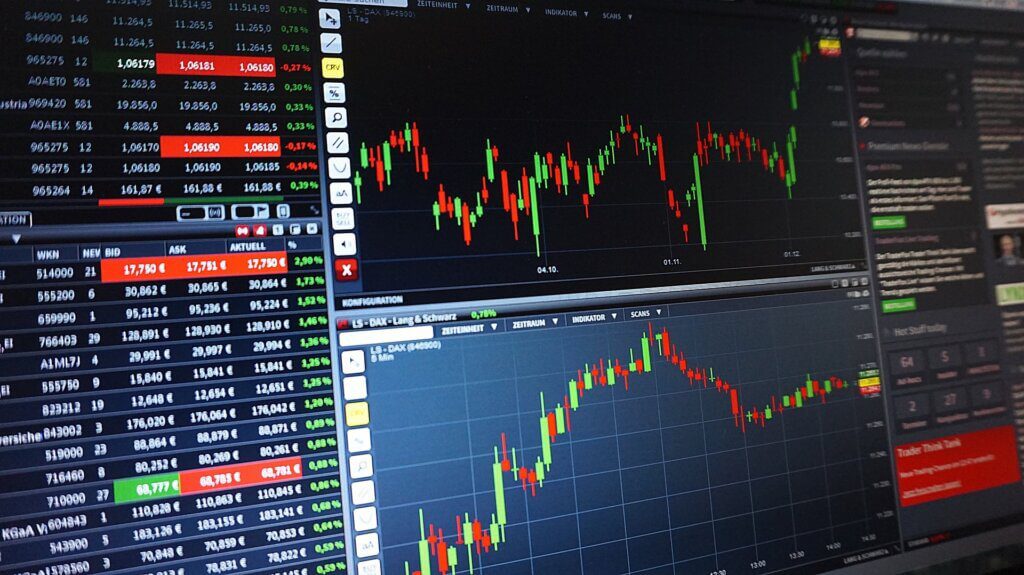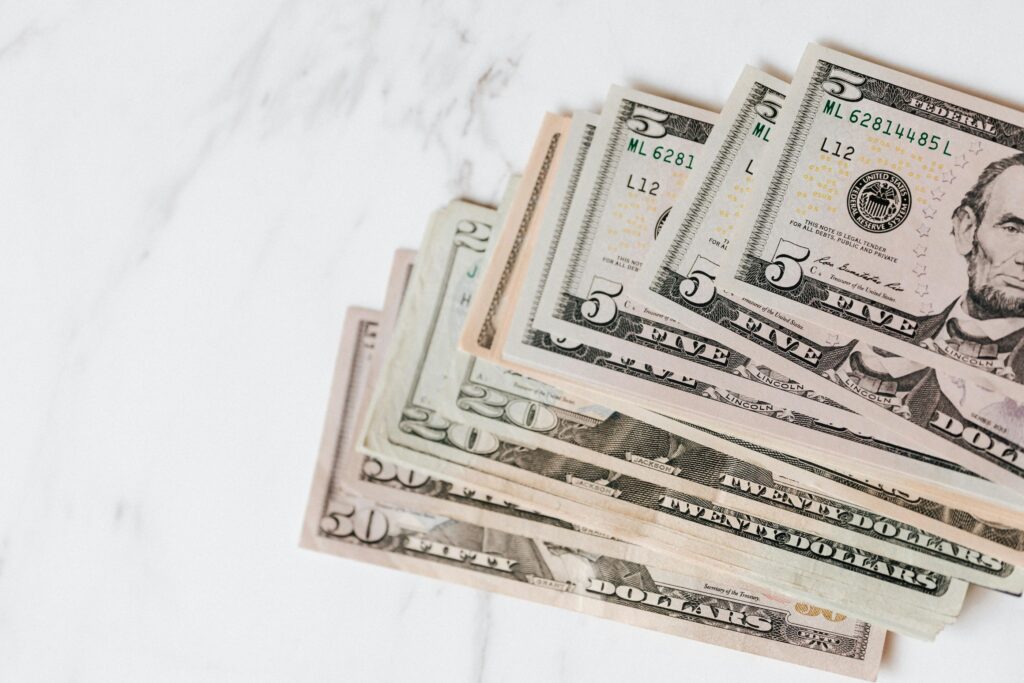On Wednesday, the Nasdaq was the top stock trend, outperforming Wall Street’s other benchmarks as Tesla’s eye-popping gains after earnings helped other megacap stocks.
Tesla jumped 9.7% after assuring investors of growth and promising more affordable models by early 2025. More good earnings elsewhere helped lift the Nasdaq higher, too.
Top stock trends: Microsoft, NVIDIA surge
There were advancements in Microsoft, up 0.8%, and Nvidia, up 1.6%.
In the biotech/pharmaceuticals sector, Biogen climbed 3.7% in the aftermath of reporting better-than-expected profits for the first quarter, while Boston Scientific added 6.1% in earnings-induced gains following the company’s upgraded annual profit projection.
Hasbro added 13.9%, and Wabtec jumped 10.8% after reporting better-than-expected profits.
Social media platforms Meta Platforms and Snap gained 1.8% and 0.6%, respectively, after a U.S. Senate bill proposed banning the popular video app TikTok.

Top stock trends: Meta, Google price buys
The earnings season continues to drive the market this week as Warren Buffett’s Berkshire Hathaway prepares to make its report for the first quarter, following other major firms such as Meta, Microsoft and Alphabet.
Top stock trends: Tesla shares up
On Wednesday, Tesla’s shares surged by nearly 10%, making it one of the key top stock trends of the day.
The electric-car maker’s move to assuage fears over slowing growth, predicting a sales increase this year ahead of introducing more affordable models as early as 2025, helped offset its weaker-than-expected first-quarter results, including a fall in quarterly revenue for the very first time in nearly four years.
On a day that witnessed Tesla’s rockiest-ever trading session – with record layoffs, executive departures, price-cuts and an agenda of delayed meetings with India’s prime minister Narendra Modi
These new strategies helped to stabilise the market’s confidence.
Even though Tesla’s share price has dropped 42% this year – partly a consequence of record-high borrowing costs following last year’s market jitters, as well as a price war to the death in China.
This new wave of developments could also help shore up Tesla shareholder support for the upcoming vote on Musk’s trademark $56 billion (£47 billion) compensation package, recently rejected by a Delaware court on the grounds that it violated the company’s fiduciary duties toward shareholders.
Musk’s shift to more affordable models (using largely existing platforms and production lines) has already been interpreted by some, like the Morgan Stanley analyst Adam Jonas, as a stealth move toward ‘software-defined price-optimised versions of Model Y/Model 3 [which] may be coming’, supported by AI gizmos and humanoid robots.
This certainly helps explain why Tesla continues to command such a premium market valuation when ‘the hobby car maker’ has entered a hyper-competitive price war with the Big Autoélite.

Top stock trends: Ai focus for Tesla
And yet Musk’s focus on AI, humanoid robots and autonomous vehicle fleets – a lengthy discourse that he engaged with during the earnings call – leaves plenty of room for the company to innovate (and fumble) its way into the future.
On Thursday, shareholders of the London Stock Exchange Group (LSEG.L) will be asked to vote on a proposal that potentially doubles CEO David Schwimmer’s pay, in a bid to make UK capital markets more dynamic by matching top executive pay to the best performers in the world’s financial markets.
Top stock trends: London Stock Exchange payouts
The London Stock Exchange’s proposed remuneration package will go to a vote at Thursday’s annual general meeting.
Schwimmer’s total annual remuneration would increase to 13.063 million pounds ($16.14 million) from 6.25 million pounds.
The move comes at a time when executives’ pay at Britain’s top listed companies has faced widespread criticism.
Improving pay flexibility could help the country from losing talent to those countries where pay debates are less constrained, say some UK fund managers.
More than 80% of Schwimmer’s package is performance-related and his base salary was proposed to rise to 1.375 million pounds from 1 million pounds as of January 2024.
Revealing that Schwimmer earned a total of 5.127 million pounds in 2023, LSEG notes that his total package still quite falls short of that of senior executives ‘at some of our peers in the US/European exchange/market infrastructure, index and data sectors’.
In anticipation of the vote, LSEG highlights how the group has evolved into a global leader since its last pay policy review in 2020 and details that its executive pay is now at the median of the sector peers and reaffirms ‘[t]he pay-for-performance approach’.
London is competing for business amid increasing competition from EU financial centres and New York – so a firming up of the competitive position in the global financial markets may well be the need of the hour.
But the advisory firm Glass Lewis has recommended to shareholders that they vote against the remuneration changes (‘excessive’ and ‘premature’), warning of ‘high outperformance’ for the existing management.
This context is essential since these compensation talks come amid more general economic worries (a cost of living crisis in Britain) and major corporate change (LSEG’s $27 billion takeover of Refinitiv, which currently accounts for around 70% of its business, and thus puts it in stronger competition with leaders such as Bloomberg).
After Texas Instruments (TXN.O), a semiconductor giant, announced an optimistic update to its second-quarter revenue guidance on Wednesday, its stock surged more than 7% in premarket trading.
This set the chip stocks up for an impressive rally and was a clear demonstration of what made this chip stock and others, like Nvidia and Applied Materials, leaders of top stock trends.
Texas Instruments remained a leader in semiconductor demand because of its broad application in the global economy: automotive, including electric vehicles, industrial, and consumer electronics, ranging from smartphones to personal computers.
In the wake of Texas Instruments’ upbeat outlook, the shares of other major semiconductor firms such as Nvidia (NVDA.O), Advanced Micro Devices (AMD.O), Arm Holdings (O9Ty.F) and Micron Technology (MU.O) rose 2-5%.
The ripples in the sector could presage a broader recovery in semiconductors the sector’s glittering leaders are often seen as harbingers of stock market trends.
Analysts at J.P. Morgan remain confident that the recovery noted by Texas Instruments is sustainable into second half of this year and into 2025, which could add about $10 billion to its market value of $150 billion per share
This brings us to the final sector in our discussion: information technology. According to the reporting of Texas Instruments for the second fiscal quarter of this year, the company projects that the midpoint for revenue will be $3.8 billion, which is slightly higher than the LSEG estimate of its second-quarter revenue of $3.77 billion.
Though it predicted only a recovery in the firm’s industrial chip demand, it also projected a recovery in consumer electronics demand, possibly signalling the end of inventory adjustments for analog chips among clients.
But analysts at Bank of America highlighted that automotive end markets might still be at the final stage of inventory clearing, a sector where client stockpiling was prominent before due to supply shortages.
For following top stock trends in semiconductors, it is vital to keep an eye on the changing landscape.
World stocks rose on Wednesday, with technology names in the vanguard as US megacap earnings took centre stage while the focus on Japan’s yen – hovering near 34-year lows – was unlikely to ease amid talk of possible intervention by the Bank of Japan.
The recovery in shares came as it became apparent that tech (see hot tech stocks) was leading the charge in top stock trends this week.
Shares of Tesla rose in after-hours trading after a big reveal of new models and better-than-expected earnings from other US companies from the technology sector also rose.
The surge in tech sentiment led to a 3.6% rise in Asian tech stocks and 2.5% growth in tech stocks in Europe.
The STOXX 600 in Europe climbed 0.2%, as a jump in tech was offset elsewhere by weakness in sectors such as pharmaceuticals and luxury goods, illustrating the divergence in top stock trends by sector.
Nasdaq futures were up 0.65%, pointing to further upside for top tech earnings stock trends.
Earnings season is set to continue this week with readings from the biggest tech giants, including Meta Platforms, Alphabet and Microsoft, and the results are expected to have a big impact on the direction of the top shares.
This week’s focus on market fundamentals and earnings comes after a short hiatus from geopolitical tensions that have been dominating the markets in recent weeks, says Samy Chaar, chief economist at Lombard Odier.
And the key divergence between the eurozone and the US has played on currency moves and top stock trends. Upcoming US economic data points, including GDP releases and the personal consumption expenditures price index, could again provide important clues about future rate paths.
These are the paths, after all, that will continue to determine the direction of top stock trends in our tech and finance sectors.
Through Asian trading, the weakness of the Japanese yen is still causing some consternation; it has implications for global currency markets, and in particular top stock trends, if it brings about an intervention by the Japanese authorities.
Against this backdrop of an evolving view of rate expectations, volatile currency markets, and some blockbuster earnings reports, the week is one with a heavy burden of events weighing on the potential for top stock trends in global markets.
Shares in the French luxury group Kering (PRTP.PA) opened down as much as 9.3% on Wednesday, their worst levels since mid-2005, placing them at the top of stock trends in luxury, after the company warned of a 40 per cent-45% fall in first-half operating profit, announced after the close on Tuesday.
First-quarter sales were down 10%, as wealthy consumers pulled back on buying Kering’s star label Gucci, at a time when overall attitudes toward luxury are becoming more cautious.
The Chinese market is a key one for Kering, and in that country, a property bubble and high youth unemployment have taken the edge off high-end fashion interest, with company executives accordingly anticipating a sluggish upswing this quarter.
Year-to-date, the company’s shares have dropped about a fifth from their value, and they are a top stock to watch to find out whether they are set to rally or fall further.
Kering’s stock hit caused ripples for the rest of the luxury sector, and highlighted the top stock trends of the sector’s interconnectedness. Burberry’s shares declined 3% as it navigates its own brand revamp efforts.
Shares in luxury leaders LVMH and Hermes also dropped 0.5% and 0.2%, respectively.
Meanwhile, as Kering’s profit warning arrives, the major luxury brands underpinning the group’s profits – including LVMH’s Louis Vuitton and Dior, Chanel, and Hermes – are building on their market leads by making strategic pricing choices aimed at growing sales among consumers struggling to cope with rising costs of living.
In the wake of Kering’s profit warning, Jefferies lowered its earnings per share (EPS) estimates for the year on account of the difficulty of pulling off a ‘turnaround’ at Gucci.
It now expects the company to post profits of 17.19 euros per share for 2018.
Kering’s management continues to optimistically expect a recovery in margin in the second half of the year as the next Gucci collection is brought to stores, but it is worth recalling what JPMorgan analysts had previously said about Kering: ‘[Kering] might view upside as a strong signal that its overhead cutting is working, although we believe there is significant execution risk and we are skeptical that Kering’s story is so quickly on its way back.’
Such vicissitudes underscore the volatility and tipping points that luxury fashion brands face in the new world of top stock patterns.







